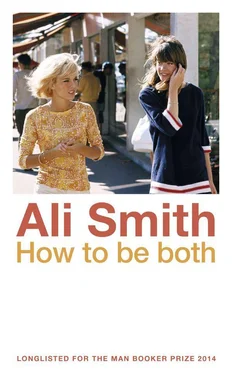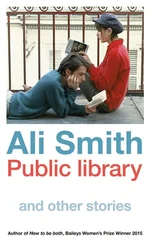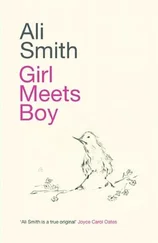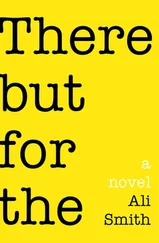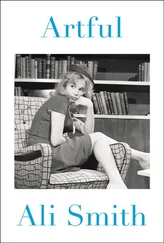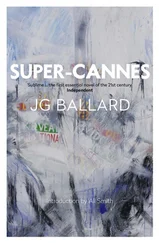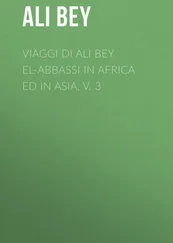George sits in the new wing of the National Gallery in front of an old painting and tries to think of the words for it.
Their classic status?
She nods. That’s it. Whatever is happening makes them new and lets them still be old both at once.
After she’d downloaded the songs, she’d sent her first reply to H.
Let’s helix again, like we did last summer.
She followed it immediately with a text saying
( Helix: Greek for twist.)
Back came a text that pierced whatever was between the outside world and George’s chest. In other words, George literally felt something.
It’s good to hear your voice
What is great about the voice of that singer called Sylvie Vartan (whom George, apparently, may even resemble a little) is that there’s almost no way it can be made gentle, or made to lie. Also, although it was recorded decades ago, her voice is always, the moment you hear it, rough with its own aliveness. It is like being pleasurably sandpapered. It lets you know you’re alive. When George wants something fierce and sad in her ears she listens to the song where Sylvie Vartan howls like a wolf on the words dreamed and read in French. One day last week with this song on repeat in her ears she cycled out towards Addenbrooke’s which is the place her mother died, then way past the hospital and out into the countryside because on her way to London, the morning before, she’d seen from the train a metal structure, a sculpture thing shaped very like a double helix.
It was a DNA structure after all, a sculpture of one, and it marked the start of a cycle trail you could follow for two miles along the little different-coloured rectangles painted on the tarmac, each standing for one of the 10,257 components there are in a single human gene.
She sat in a clump of grass at the side of the path in the early spring sun. The grass was wet. She didn’t care. There were bees and flies out and about. A small bee-like creature landed on the cuff of her jacket and she flicked it away with a precise flick of her thumb and first finger.
But a fraction of a second after she did she realized the impact her finger must have had on something so small.
It must have felt like being hit by the rounded front of a giant treetrunk that’s been swung through the air at you without you knowing it was coming.
It must have felt like being punched by a god.
That’s when she sensed, like something blurred and moving glimpsed through a partition whose glass is clouded, both that love was coming for her and the nothing she could do about it.
The cloud of unknowing, her mother said in her ear.
Meets the cloud of knowing, George thought back.
So she cycled the length of the single gene holding her phone camera out and towards the ground. She took a photo of the other double helix sculpture that marked the end.
She looked at the picture on her phone then back up at the artwork itself.
It resembled a joyful bedspring or a bespoke ladder. It was like a kind of shout, if a shout to the sky could be said to look like something. It looked like the opposite of history, though they were always going on at school about how DNA history had been made here in this city.
What if history, instead, was that shout, that upward spring, that staircase-ladder thing, and everybody was just used to calling something quite different the word history? What if received notions of history were deceptive?
Deceived notions. Ha.
Maybe anything that forced or pushed such a spring back down or blocked the upward shout of it was opposed to the making of what history really was.
When she got back to the house she downloaded the film and the photos and she sent them.
When you come back we will cycle the length of one thirty-thousandth of the human genome , she wrote. If we ever want to cycle the whole thing it will take us four years, that’s if we do it without stopping and unless we split the task and do half each, which will mean it will take two years each but be a lot less interesting. It will be like cycling round the earth 15 times, or seven and a half if we do half each.
Halfway through writing this email George noticed that she’d used, in its first sentence, the future tense, like there might be such a thing as a future.
!
And did you know (you probably did) that Rosalind Franklin nearly didn’t get credited for the double helix discovery? Though she took the original X-ray that meant Crick and Watson could make their discovery, and was clearly on the way to the same discovery herself. And that when Watson saw her giving a talk about her research he thought she ought to have been warmer and more frivolous in her lecture about diffraction (!) and that he might have been more interested in what she was saying if she’d taken off her glasses and done something with her hair. So we need to add a whole new verse to that wrecking ball song. It is only sixty three years ago that this happened, and that’s less than the age of your grandmother and only eleven years before my mother happened. It is the kind of historic fact that opposes the making of true history. Anyway in the film here the green bars are for adenine, the blue for cytosine, the green for guanine and the red for thymine.
Oh yeah and also, if you remember. You asked, and te semper volam.
Please remember, she thought as she sent it.
Sardonic! That was the other word, along with generous, that her mother’d said she was. Not sarcastic.
When I remember, it is like an earthquake, Henry said yesterday. Sometimes I don’t remember, for almost all day. And then I do. Or I remember maybe a different thing that happened. Like when we went to that shop and bought the pipe that when you blew down it the very long bubbles came out of it.
Henry is doing a project on earthquakes and tsunamis at school. The schoolbook from which he is making his drawings and getting his facts has a picture on its cover of a motorway that looks like it’s been lifted by a giant hand and put back down on its side instead and all the trucks and cars have slid off it and are on their roofs, wheels-upward, at the foot of it.
Strange, but the photo is beautiful. The photos all through this book are beautiful, of roads with crevasse cracks splitting through them, of a clock face at the top of a tower split in half so only the roman numerals for seven to eleven survive and the rest of the face is just sky. There is one picture of a small girl holding a teakettle and standing against a backdrop of aid tents. It’s a natural disaster and it looks a bit like a fashion shoot. Well, almost all photos of roughed-up places, so long as there are no actual dead people in them, look like a fashion shoot.
S ooner or later , George’s mother said in her head, the ones with the dead people in them will look like a fashion shoot too .
Fashion shot. Ha ha.
That would make a good Subvert.
George saw that her little brother, sitting at the breakfast bar over his earthquakes and tsunamis book, was hanging his head like a done flower.
She pulled up a chair beside him.
You’re a rift, she said.
I’m a what? he said in a little voice.
You’re a fault, she said.
I am not, he said.
You are, you’re a San Andreas fault. You’re a tectonic plate, she said.
You’re a tectonic plate, he said.
Sticks and stones may break my bones, she said. But names will never harm me. You’re a drifting continent.
You’re a drifting continent, he said
You’re a drifting incontinent, she said (though the subtlety of this pretty much went over Henry’s head). You’re a Richter scale. A scaly Richter. A nidiot.
Читать дальше
